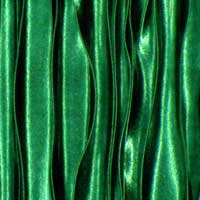 Researchers have created stretchable energy-storage devices using a specialized printing technology, innovative materials and the centuries-old art of origami.
Researchers have created stretchable energy-storage devices using a specialized printing technology, innovative materials and the centuries-old art of origami.
Wednesday, December 30, 2020
Powering up stretchy technology
 Researchers have created stretchable energy-storage devices using a specialized printing technology, innovative materials and the centuries-old art of origami.
Researchers have created stretchable energy-storage devices using a specialized printing technology, innovative materials and the centuries-old art of origami.
New X-ray camera achieves new heights of precision and accuracy
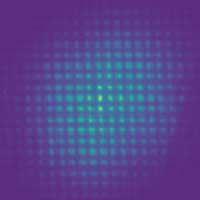 Scientists developed a new X-ray imager with much greater precision and accuracy than possible before. The new levels are less than one hundredth of an X-ray wavelength, even smaller than an Angstrom.
Scientists developed a new X-ray imager with much greater precision and accuracy than possible before. The new levels are less than one hundredth of an X-ray wavelength, even smaller than an Angstrom.
Tiny terahertz laser is the first to reach three key performance goals at once
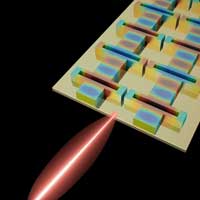 Researchers have achieved a tiny high-power narrow-beam laser that operates in the terahertz frequencies. The new devices are the first terahertz laser devices to reach three key performance goals at once - high power, tight beam, and broad frequency tuning - in a design that can work outside a laboratory.
Researchers have achieved a tiny high-power narrow-beam laser that operates in the terahertz frequencies. The new devices are the first terahertz laser devices to reach three key performance goals at once - high power, tight beam, and broad frequency tuning - in a design that can work outside a laboratory.
Tuesday, December 29, 2020
Electrons hop to it on twisted molecular wires
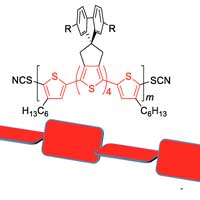 Researchers synthesized twisted molecular wires just one molecule thick that can conduct electricity with less resistance compared with previous devices. This work may lead to carbon-based electronic devices that require fewer toxic materials or harsh processing methods.
Researchers synthesized twisted molecular wires just one molecule thick that can conduct electricity with less resistance compared with previous devices. This work may lead to carbon-based electronic devices that require fewer toxic materials or harsh processing methods.
Detective work in theoretical physics: Researchers publish review article on the physics of interacting particles
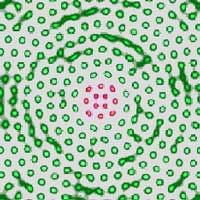 Physicists have published a review article on the so-called dynamical density functional theory (DDFT). This is a method for describing systems consisting of a large number of interacting particles such as are found in liquids, for example.
Physicists have published a review article on the so-called dynamical density functional theory (DDFT). This is a method for describing systems consisting of a large number of interacting particles such as are found in liquids, for example.
Monday, December 28, 2020
Faster, greener way of producing carbon spheres
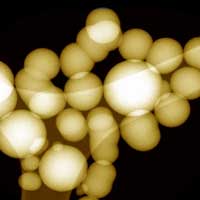 A fast, green and one-step method for producing porous carbon spheres, which are a vital component for carbon capture technology and for new ways of storing renewable energy.
A fast, green and one-step method for producing porous carbon spheres, which are a vital component for carbon capture technology and for new ways of storing renewable energy.
Shapeshifting crystals - Varying stability in different forms of gallium selenide monolayers
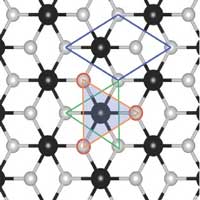 The gallium selenide monolayer has been recently discovered to have an alternative crystal structure and has diverse potential applications in electronics. Understanding its properties is crucial to understand its functions.
The gallium selenide monolayer has been recently discovered to have an alternative crystal structure and has diverse potential applications in electronics. Understanding its properties is crucial to understand its functions.
Chemists convert plastic bottle waste into MOF-based insecticide sorbent
 Scientists propose a method to create a metal-organic framework sorbent for imidacloprid insecticide removal from water.
Scientists propose a method to create a metal-organic framework sorbent for imidacloprid insecticide removal from water.
High-speed atomic force microscopy takes on intrinsically disordered proteins
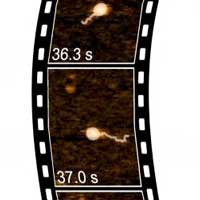 Pioneering high-speed atomic force microscope technology has now shed light on the structure and dynamics of some of life's most ubiquitous and inscrutable molecules - intrinsically disordered proteins.
Pioneering high-speed atomic force microscope technology has now shed light on the structure and dynamics of some of life's most ubiquitous and inscrutable molecules - intrinsically disordered proteins.
Friday, December 25, 2020
Experiment takes 'snapshots' of light, stops light, uses light to change properties of matter
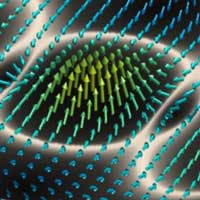 Researchers performed an ultrafast microscopy experiment, where they trapped green light pulses of 20 fs duration as composite light-electron density fluctuation waves and imaged their propagation on a silver surface at the speed of light.
Researchers performed an ultrafast microscopy experiment, where they trapped green light pulses of 20 fs duration as composite light-electron density fluctuation waves and imaged their propagation on a silver surface at the speed of light.
Quantum nanodevice can be both a heat engine and a fridge at the same time
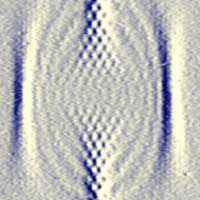 The device is one of the first to test how quantum effects, which govern the behavior of particles on the smallest scale, might one day be exploited to enhance the performance of nanotechnologies.
The device is one of the first to test how quantum effects, which govern the behavior of particles on the smallest scale, might one day be exploited to enhance the performance of nanotechnologies.
Thursday, December 24, 2020
A very special (and tiny) Christmas tree
 The structure and all details are made of polymer hardened by the scanning of a focused laser beam.
The structure and all details are made of polymer hardened by the scanning of a focused laser beam.
Atomic-scale nanowires can now be produced at scale
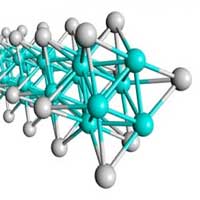 Researchers have discovered a way to make self-assembled nanowires of transition metal chalcogenides at scale using chemical vapor deposition. By changing the substrate where the wires form, they can tune how these wires are arranged, from aligned configurations of atomically thin sheets to random networks of bundles.
Researchers have discovered a way to make self-assembled nanowires of transition metal chalcogenides at scale using chemical vapor deposition. By changing the substrate where the wires form, they can tune how these wires are arranged, from aligned configurations of atomically thin sheets to random networks of bundles.
Wednesday, December 23, 2020
Theory describes quantum phenomenon in nanomaterials
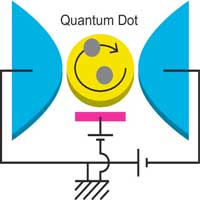 Theoretical physicists have developed mathematical formulas that describe a physical phenomenon happening within quantum dots and other nanosized materials. The formulas could be applied to further theoretical research about the physics of quantum dots, ultra-cold atomic gasses, and quarks.
Theoretical physicists have developed mathematical formulas that describe a physical phenomenon happening within quantum dots and other nanosized materials. The formulas could be applied to further theoretical research about the physics of quantum dots, ultra-cold atomic gasses, and quarks.
Record-setting thermoelectric figure of merit achieved for metal oxides
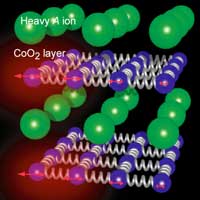 Scientists have developed a layered cobalt oxide with a record-setting thermoelectric figure of merit, which can be used to enhance thermoelectric power generation.
Scientists have developed a layered cobalt oxide with a record-setting thermoelectric figure of merit, which can be used to enhance thermoelectric power generation.
Tuesday, December 22, 2020
Japanese art technique can be used to create 3D microstructures and nanotools
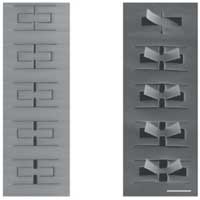 Engineers are using ideas taken from paper-folding practices to create a sophisticated alternative to 3D printing.
Engineers are using ideas taken from paper-folding practices to create a sophisticated alternative to 3D printing.
New electron microscopy technique offers first look at previously hidden processes
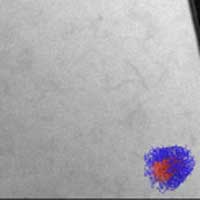 Researchers can now fill in missing information about nanoscale polymerization and 'smart' materials for medicine and the environment.
Researchers can now fill in missing information about nanoscale polymerization and 'smart' materials for medicine and the environment.
Chemists synthesize 'flat' silicon compounds
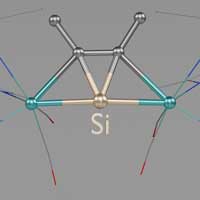 Chemists have synthesized extremely unusual compounds. Their central building block is a silicon atom. Different from usual, however, is the arrangement of the four bonding partners of the atom, which are not in the form of a tetrahedron around it, but flat like a trapezoid.
Chemists have synthesized extremely unusual compounds. Their central building block is a silicon atom. Different from usual, however, is the arrangement of the four bonding partners of the atom, which are not in the form of a tetrahedron around it, but flat like a trapezoid.
New imaging method views soil carbon at near-atomic scales
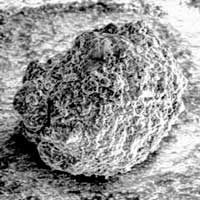 A new study describes a breakthrough method for imaging the physical and chemical interactions that sequester carbon in soil at near atomic scales, with some surprising results.
A new study describes a breakthrough method for imaging the physical and chemical interactions that sequester carbon in soil at near atomic scales, with some surprising results.
'Soft' nanoparticles give plasmons new potential
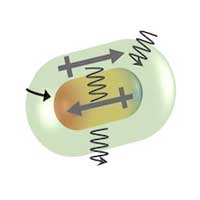 Scientists show how coated nanoantennas retain energy to potentially catalyze chemical reactions.
Scientists show how coated nanoantennas retain energy to potentially catalyze chemical reactions.
A 10-second COVID-19 antibody test with 3D-printed high-performance sensors
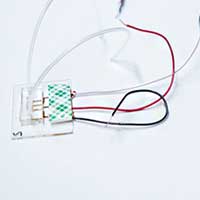 Researchers have developed one of the fastest known COVID-19 antibody tests. The test results are available in 10 to 15 seconds and detect the presence of two of the antibodies to SARS-CoV-2, the virus responsible for COVID-19.
Researchers have developed one of the fastest known COVID-19 antibody tests. The test results are available in 10 to 15 seconds and detect the presence of two of the antibodies to SARS-CoV-2, the virus responsible for COVID-19.
BioAFMviewer software for simulated atomic force microscopy of biomolecules
 The newly developed BioAFMviewer software opens the opportunity to use the enormous amount of available high-resolution protein data to better understand experiments. Within an interactive interface with rich functionality, the BioAFMviewer computationally emulates tip-scanning of any biomolecular structure to generate simulated AFM graphics and movies.
The newly developed BioAFMviewer software opens the opportunity to use the enormous amount of available high-resolution protein data to better understand experiments. Within an interactive interface with rich functionality, the BioAFMviewer computationally emulates tip-scanning of any biomolecular structure to generate simulated AFM graphics and movies.
Novel glue is activated by a magnetic field
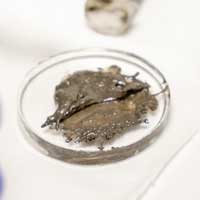 The new 'magnetocuring' adhesive is made by combining a typical commercially available epoxy adhesive with specially tailored magnetic nanoparticles.
The new 'magnetocuring' adhesive is made by combining a typical commercially available epoxy adhesive with specially tailored magnetic nanoparticles.
Transforming self-assembled architectures into functional materials
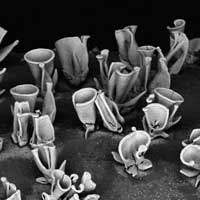 Researchers discovered shape-preserving ion-exchange reactions that open up new routes towards self-assembled materials with various novel, functional properties.
Researchers discovered shape-preserving ion-exchange reactions that open up new routes towards self-assembled materials with various novel, functional properties.
Monday, December 21, 2020
Topological phases in biological systems
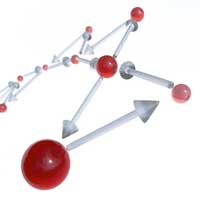 Physicists have shown that topological phases could exist in biology, and in so doing they have identified a link between solid-state physics and biophysics.
Physicists have shown that topological phases could exist in biology, and in so doing they have identified a link between solid-state physics and biophysics.
Striking gold: Catalysis research at the nanoscale
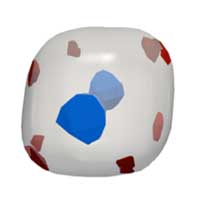 By examining tiny particles of gold with powerful X-ray beams, scientists hope they can learn how to cut down on harmful carbon monoxide emissions from motor vehicles.
By examining tiny particles of gold with powerful X-ray beams, scientists hope they can learn how to cut down on harmful carbon monoxide emissions from motor vehicles.
Researchers invent method to 'sketch' quantum devices with focused electrons
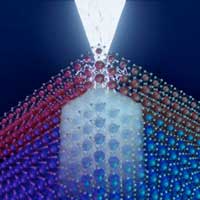 Technique is 10,000 faster than previous methods, and can create active nanostructured gates directly below two-dimensional materials such as graphene.
Technique is 10,000 faster than previous methods, and can create active nanostructured gates directly below two-dimensional materials such as graphene.
New nanomaterial a key step toward hydrogen as a stable and clean fuel source
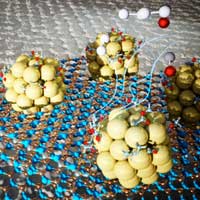 Researchers have designed and synthesized an effective material for speeding up one of the limiting steps in extracting hydrogen from alcohols. The material, a catalyst, is made from tiny clusters of nickel metal anchored on a 2D substrate.
Researchers have designed and synthesized an effective material for speeding up one of the limiting steps in extracting hydrogen from alcohols. The material, a catalyst, is made from tiny clusters of nickel metal anchored on a 2D substrate.
Mapping out a transient atom
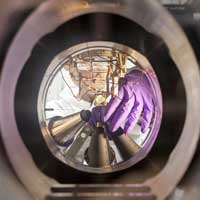 Scientists have published the results of an experiment that could provide a blueprint for the analysis of transitions states in atoms and molecules. This would open up new opportunities to gain insights into important processes such as photocatalysis, elementary steps in photosynthesis and radiation damage.
Scientists have published the results of an experiment that could provide a blueprint for the analysis of transitions states in atoms and molecules. This would open up new opportunities to gain insights into important processes such as photocatalysis, elementary steps in photosynthesis and radiation damage.
Skyrmions - the basis for a completely new computer architecture?
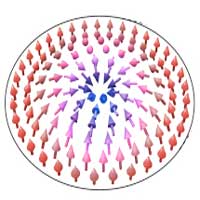 A team of researchers has succeeded for the first time in producing a tunable multilayer system in which two different types of skyrmions - the future bits for '0' and '1' - can exist at room temperature.
A team of researchers has succeeded for the first time in producing a tunable multilayer system in which two different types of skyrmions - the future bits for '0' and '1' - can exist at room temperature.
Goldilocks and the three quantum dots: This one's just right for peak solar panel performance
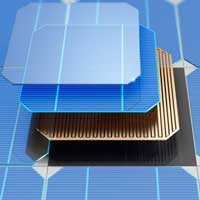 Maximising the efficiency of renewable energy technology is dependent on creating nanoparticles with ideal dimensions and density, new simulations have shown. Scientists have developed a process for calculating the perfect size and density of quantum dots needed to achieve record efficiency in solar panels.
Maximising the efficiency of renewable energy technology is dependent on creating nanoparticles with ideal dimensions and density, new simulations have shown. Scientists have developed a process for calculating the perfect size and density of quantum dots needed to achieve record efficiency in solar panels.
Saturday, December 19, 2020
Seeking answers in ferroelectric patterning
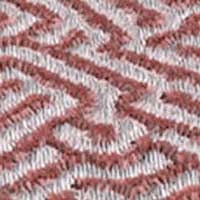 Why do some ferroelectric materials display bubble-shaped patterning, while others display complex, labyrinthine patterns? A new study finds the answer to the changing patterns in ferroelectric films lies in non-equilibrium dynamics, with topological defects driving subsequent evolution.
Why do some ferroelectric materials display bubble-shaped patterning, while others display complex, labyrinthine patterns? A new study finds the answer to the changing patterns in ferroelectric films lies in non-equilibrium dynamics, with topological defects driving subsequent evolution.
Friday, December 18, 2020
Atomic-scale apertures represent a novel regime in physics and materials science
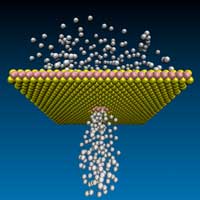 Two new studies demonstrate how to fabricate atomically-thin materials with atom-sized pores, with possible applications ranging from water purification to energy harvesting.
Two new studies demonstrate how to fabricate atomically-thin materials with atom-sized pores, with possible applications ranging from water purification to energy harvesting.
Shifting gears toward chemical machines
 Engineers have utilized a catalytic reaction that causes a two-dimensional, chemically-coated sheet to spontaneously 'morph' into a three-dimensional gear that performs sustained work.
Engineers have utilized a catalytic reaction that causes a two-dimensional, chemically-coated sheet to spontaneously 'morph' into a three-dimensional gear that performs sustained work.
Innovative coating makes medical devices safer
 The new coating can prevent liquids like water and blood from sticking onto surfaces. The researchers also found that the liquid-repellant coating can kill bacteria and halt blood clot formation on an object's surface.
The new coating can prevent liquids like water and blood from sticking onto surfaces. The researchers also found that the liquid-repellant coating can kill bacteria and halt blood clot formation on an object's surface.
A dash of salt could revolutionize drug delivery and bio-analysis
 A spoonful of sugar may make the medicine go down, but a new study suggests a dash of salt is key to progressing important medical areas such as drug delivery and biological sample analysis.
A spoonful of sugar may make the medicine go down, but a new study suggests a dash of salt is key to progressing important medical areas such as drug delivery and biological sample analysis.
Tuning nanomaterials at the atomic scale could transform clean energy technology
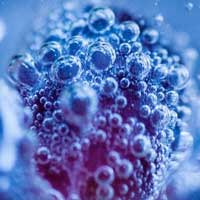 Using an innovative chemical strategy, a team of researchers have produced a new form of catalyst using the elements cobalt and titanium. The advantage of these elements is that they are much more abundant in nature than other commonly used catalytic materials containing precious metals such as iridium or ruthenium.
Using an innovative chemical strategy, a team of researchers have produced a new form of catalyst using the elements cobalt and titanium. The advantage of these elements is that they are much more abundant in nature than other commonly used catalytic materials containing precious metals such as iridium or ruthenium.
Thursday, December 17, 2020
2D material controls light twice stronger
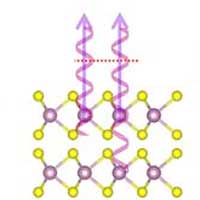 Scientists have taken a step closer to the goal of controlling light by identifying nonlinear optical phenomena occurring in heterobilayers composed of two-dimensional materials.
Scientists have taken a step closer to the goal of controlling light by identifying nonlinear optical phenomena occurring in heterobilayers composed of two-dimensional materials.
Ultra-thin designer materials unlock quantum phenomena
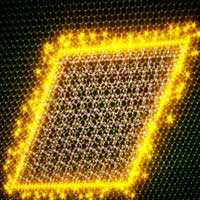 A team of theoretical and experimental physicists have designed a new ultra-thin material that they have used to create elusive quantum states. Called one-dimensional Majorana zero energy modes, these quantum states could have a huge impact for quantum computing.
A team of theoretical and experimental physicists have designed a new ultra-thin material that they have used to create elusive quantum states. Called one-dimensional Majorana zero energy modes, these quantum states could have a huge impact for quantum computing.
Ultracold atoms reveal a new type of quantum magnetic behavior
 A new study illuminates surprising choreography among spinning atoms: Researchers reveal how magnetic forces at the quantum, atomic scale affect how atoms orient their spins.
A new study illuminates surprising choreography among spinning atoms: Researchers reveal how magnetic forces at the quantum, atomic scale affect how atoms orient their spins.
Catalyst research: Molecular probes require highly precise calculations
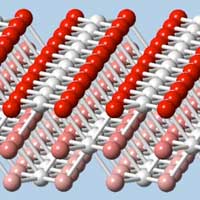 Scientists have demonstrated the use of calculation methods with so-called hybrid functionals for the reliable interpretation of experimental data.
Scientists have demonstrated the use of calculation methods with so-called hybrid functionals for the reliable interpretation of experimental data.
Polariton interactions: Light matters
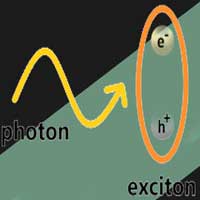 Why do two-dimensional exciton-polaritons interact? The answer is found to lie in the 'light-like' characteristics of these quasiparticles. This is important for future applications using polaritons in atomically-thin semiconductors, such as ultra-low energy electronics.
Why do two-dimensional exciton-polaritons interact? The answer is found to lie in the 'light-like' characteristics of these quasiparticles. This is important for future applications using polaritons in atomically-thin semiconductors, such as ultra-low energy electronics.
Organic molecules on a metal surface... a machinist's best friend
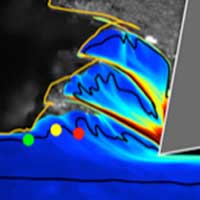 How can you improve the cutting of 'gummy' metals? Engineers have come up with an answer - and their findings may help in manufacturing products and reducing component failures.
How can you improve the cutting of 'gummy' metals? Engineers have come up with an answer - and their findings may help in manufacturing products and reducing component failures.
Wednesday, December 16, 2020
Quantum insulators create multilane highways for electrons
 Researchers have experimentally realized the quantum anomalous Hall effect in a multilayered insulator, essentially producing a multilane highway for the transport of electrons that could increase the speed and efficiency of information transfer without energy loss.
Researchers have experimentally realized the quantum anomalous Hall effect in a multilayered insulator, essentially producing a multilane highway for the transport of electrons that could increase the speed and efficiency of information transfer without energy loss.
Colorful, magnetic Janus balls could help foil counterfeiters (w/video)
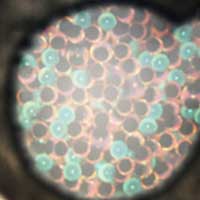 Researchers have developed tiny 'Janus balls' that show their colored side under a magnetic field. These microparticles could be useful in inks for anti-counterfeiting tags, which could be verified with an ordinary magnet, the researchers say.
Researchers have developed tiny 'Janus balls' that show their colored side under a magnetic field. These microparticles could be useful in inks for anti-counterfeiting tags, which could be verified with an ordinary magnet, the researchers say.
Exploring the flow of polymers through nanopores
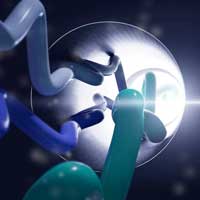 Printing with an ink-jet printer is part of daily life, but the same technology finds more complex applications in electronics and in protein separation. These applications rely on the quality of the printing process which depends on the flow of the 'ink' through narrow pores.
Printing with an ink-jet printer is part of daily life, but the same technology finds more complex applications in electronics and in protein separation. These applications rely on the quality of the printing process which depends on the flow of the 'ink' through narrow pores.
Physicists solve geometrical puzzle in electromagnetism
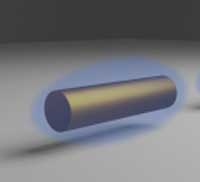 A team of scientists have solved the longstanding problem of how electrons move together as a group inside cylindrical nanoparticles.
A team of scientists have solved the longstanding problem of how electrons move together as a group inside cylindrical nanoparticles.
Novel ionic gel conductor may form the basis of flexible electronics and efficient photovoltaics
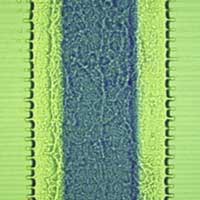 Researchers have created a new carbon-based electrical device by using an ionic gel made of a conductive polymer. This work may lead to cheaper and more reliable flexible printable electronics.
Researchers have created a new carbon-based electrical device by using an ionic gel made of a conductive polymer. This work may lead to cheaper and more reliable flexible printable electronics.
Semiconductor material analysis made possible with artificial intelligence
 Instant analysis of magnetic Hamiltonian parameters through electron microscopy.
Instant analysis of magnetic Hamiltonian parameters through electron microscopy.
Changing graphene properties one bond at a time
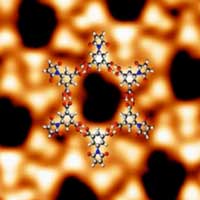 An international research team has demonstrated a novel process to modify the structure and properties of graphene. This chemical reaction, known as photocycloaddition, modifies the bonds between atoms using ultraviolet (UV) light.
An international research team has demonstrated a novel process to modify the structure and properties of graphene. This chemical reaction, known as photocycloaddition, modifies the bonds between atoms using ultraviolet (UV) light.
Subscribe to:
Posts (Atom)
